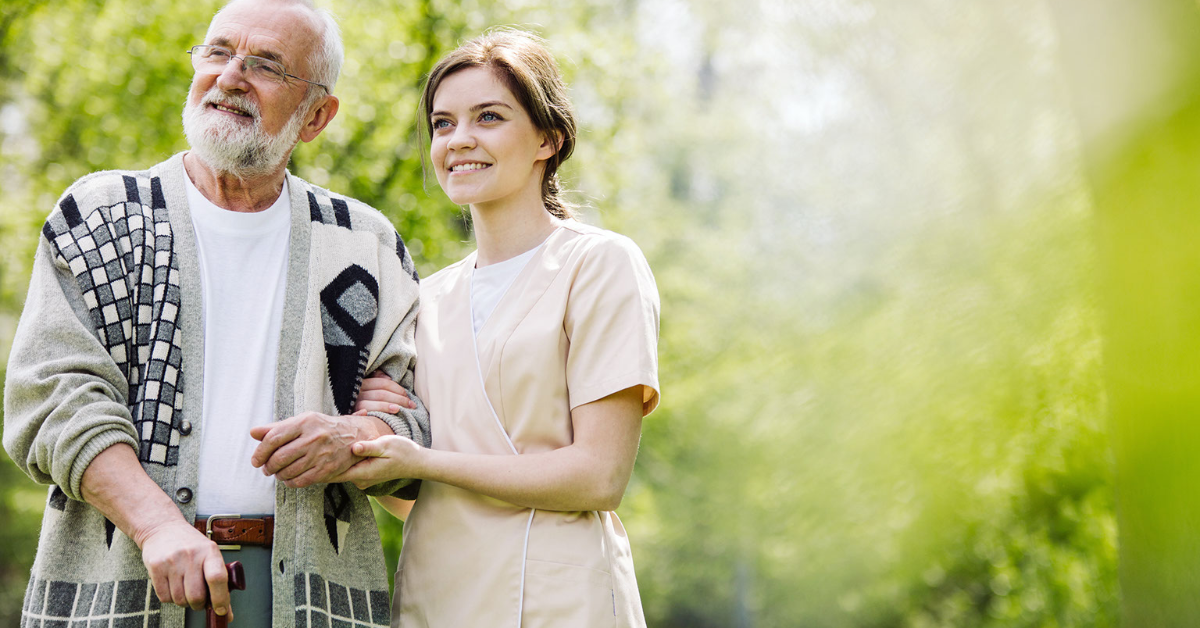- HOME
- SERVICES
- WHERE TO BEGIN
- LOCATIONS
- RESOURCES
- HEALTH PLAN SERVICES
- CAREERS
- EMPLOYEES

Fall Prevention Week
Falls are the leading cause of both fatal and nonfatal injuries for people aged 65+. Every year 1 in 4 older adults experience a fall. Falls can result in hip fractures, broken bones, and head injuries. And even falls without a major injury can cause an older adult to become fearful or depressed, making it difficult for them to stay active. If you have an aging parent, grandparent, or neighbor in your life or are a caretaker or home attendant, helping to reduce the risks of falls is a great way to help them stay healthy and independent for as long as possible.
The good news about falls is that most of them can be prevented.
Five Steps to Reducing the Risk of Falls:
Here are five steps you can take today to help your older loved one reduce their risk of a fall:
1. Enlist their support in taking simple steps to stay safe.
Ask the person you are caring for if they’re concerned about falling. Many older adults recognize that falling is a risk, but they believe it won’t happen to them or they won’t get hurt; even if they’ve already fallen in the past. If they bring up concerns about falling, dizziness, or balance, encourage them to discuss these concerns with their health care provider who can assess their risk and decide on treatments and supports to help. Premier Caretakers can also follow up with involved family members about getting support to make a primary care appointment and address concerns regarding fall risk.
2. Ask about their last eye checkup.
If the person you are caring for hasn’t had an eye checkup in a few years, now would be a good time to encourage them to make an appointment. If they wear glasses, make sure they have a current prescription and they’re using the glasses as advised by their eye doctor. Remember that using tint-changing lenses can be hazardous when going from bright sun into darkened buildings and homes. A simple strategy is to change glasses upon entry or stop until their lenses adjust. Bifocals also can be problematic on stairs, so it’s important to be cautious. Going for an annual checkup with their eye doctor is important to keep track of any changes in vision that can increase fall risk as well as monitor overall eye health and catch other possible health concerns.
3. Notice if they’re holding onto walls, furniture, or someone else when walking or if they appear to have difficulty walking or arising from a chair.
These are all signs that should be addressed with their primary care doctor. Seeing a physical therapist could be recommended to help your older loved one improve their balance, strength, and gait through exercise. Premier Caretakers should also report these observations through the PQIP system, so that Premier Nursing staff can also follow up regarding the increase of fall risk. If the person uses a walker or cane, make sure they are using the aid properly.
4. Talk about their medications.
If the person you are caring for is having a hard time keeping track of medicines or is experiencing side effects, encourage them to discuss their concerns with their doctor and pharmacist. Suggest that they have their medications reviewed each time they get a new prescription. Also, beware of non-prescription medications that contain sleep aids. These can lead to balance issues and dizziness. If your older loved one is having sleeping problems, encourage them to talk to their doctor or pharmacist about safer alternatives. Premier Caretakers should also report issues with taking medication, side effects or increased fatigue through the PQIP system, so that Premier Nursing staff can also follow up regarding these noted concerns.
5. Do a walk-through safety assessment of their home.
There are many simple and inexpensive ways to make a home safer. Here are some examples:
General Walkability: Ensure main walking space between and within rooms are free from clutter and obstructions. Make sure the person you are caring for has a safe path to the bathroom to and around the kitchen and anywhere else they may need access to.
Lighting: Increase lighting throughout the house, especially at the top and bottom of stairs. Ensure that lighting is readily available when getting up in the middle of the night.
Stairs: Make sure there are two secure rails on all stairs.
Bathrooms: Install grab bars in the tub/shower and near the toilet. Make sure they’re installed where one would actually use them. For even greater safety, consider using a shower chair and hand-held shower.
Downloadable Resources:
Debunking the Myths of Falls in Older Adults
Fall Prevention Conversation Starter
For more information contact:
Premier Home Health Care Services, Inc.
www.premierhomehealthcare.com
